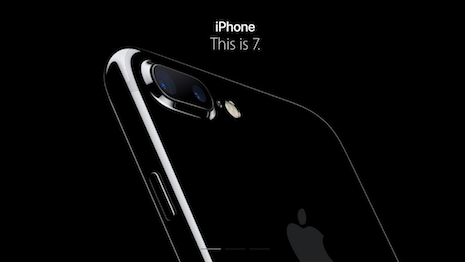By Daniel Hodges
If there is one lesson we need to learn from 2016 about what 2017 has in store it is the importance of understanding marketplace trends.
The consequence of missing a trend can be devastating to an organization. This is especially apt when it comes to business where consumer behavior is rapidly changing alongside politics, economics and technology.
How do you identify trends important to businesses?
A trend has an inflection-point beginning. This is an event that results in a significant change in a company, industry, sector, economy or political situation.
The launch of the World Wide Web on August 6, 1991 was such an event. It created opportunity for those industries that embraced it and devastated those that ignored it or failed to adopt over time.
It is difficult to see the impact of inflection points in the present time, but once you clearly identify inflection points, you can harvest their potential for business. For the purposes of illustration I will focus on the 10th anniversary of the launch of the iPhone.
Here is how it happened
Apple cofounder Steve Jobs said, “Every once in a while, a revolutionary product comes along that changes everything.”
At the time, I was head of global sales for Nokia Interactive with the largest global team selling mobile advertising. Nokia had a 49 percent share of the global of smartphone marketplace.
When the late Jobs said, “We’re gonna reinvent the phone. Now, we’re gonna start … with a revolutionary user interface ... the result of years of research and development, and of course, it’s an interplay of hardware and software.”
Nokia, like many companies before and after, missed this inflection point and rapidly lost market share and eventually the business.
The smartphone user interface pioneered by Apple marries human behavior of cognitive thinking, sight, sound and motion with software. It caused the Smartphone Effect, the same thing that makes the smartphone an indispensable extension of our work and life today.
How do you identify and capitalize inflection points for industry?
There are four principles of inflection-point detection and monetization.
See change: Most people intuitively knew the iPhone changed the game but few could translate the impact of iPhone to their business.
One effective way for signal detection is attending industry events to network, learn immersively, and experience technology first hand. You need to see and experience change firsthand to take any action.
Think differently: Most innovations and inventions are random and serendipitous. Reading, networking and attending conferences outside your main expertise opens worlds of possibilities.
In physics, Albert Einstein said, “No problem can be solved from the same level of consciousness that created it.”
In politics, Nelson Mandela said, “It always seems impossible until it's done.”
Innovation happens in a non-linear manner.
Feel change: Clayton Christensen, author of the “Innovator’s Dilemma” says in his book that few companies can successfully navigate change.
One suggestion he offers to organizations is “watching how customers actually use a product provides much more reliable information than can be gleaned from a verbal interview or a focus group.”
Social media can also be very useful in trend detection. These are effective ways for companies to see how they need to change to meet consumer’s expectations.
Practice daily: In his day, Winston Churchill was an innovative thinker whose views on success ring true today: “Success is not final, failure is not fatal: it is the courage to continue that counts.”
Innovation, learning and experimentation are a daily business requirement for the media business today. This is a 365-day-a-year and 24/7 activity.
 Dan Hodges is CEO of Consumers in Motion
Dan Hodges is CEO of Consumers in Motion
Daniel Hodges is CEO of Consumers in Motion Group and a member of the American Association of Political Consultants. Reach him at [email protected].
{"ct":"a3HA5F2YK\/17QccUdpplDULI33EQimy4r7IbN+v2ev2UzBcxWs9R0otTM80h\/3WtYJq5r3RWqaBm+ul3TN09zTS95kPnHBPWHKTTowD5bvE7FhKWUrh6bVIcLsNkIIKurZXbvxJPXSe\/kwNW3kWZQDuUMtkWCp3JeRFLr\/fUXkiiMK3quBqd4otx\/6mN6wjg8juJTrWlfM7lfKtJ6bKhw27553urOC7nvFuw3OCuPdNv0JO9sdTy45Qw12UkB5EICcF4IkxgdWffJy+UZDpvUmAu1Psu9jupij4EOR1zoulGFb4rLOZ5XoxcIWTzxofJhnYWJpR\/OSgKNEFI0WrPeEG+ilbf6Zw0NW0oitqfdYBEiWaFcZNl8MKkl92c14zTKsiccl2EV0IlUGqhfjxLT\/DQOP0J2QUM7kSUY5zj022BQcn1RDUjzXTmLTflEfyCPIBK4XueYOmDZy7KeRgaTisxvAkxShMSmvqAw7sSXzpBVf1UDGl0ZUJN7kAPddzzkj6mZCA5SQUOBimu2kyNDyuM3Ixs5kvkPYJ3GVwInns\/Wk9qCDoJggIC5GFqOKn8QbALNAe1dRRUkXu\/yIzB2ZSggx+PsKz84AkzjSX88Yfc+dWEC20wCfjeVCbxlX+R6RC0XcypEM0+xio6zb5fQLbc5pLPqRXURxlkdg03OXGIDkzr\/npz3JqCv6RiGHo5kclhpplU46fTmogD\/w4ghL0fGJQcgE6tDgCkjrH6wifA0eTYyp95LTscxjGlPXSJqMHpkRhV1eAVj3F3k4cWGo3LQam9jrht\/Iy0Jlwo2Ljrmj4voT8g3Jk\/cNP2PSMGntLlgSaYkTQ01UzKw3NzcqPHdSJYRHUVSt5h5O8Ec3\/l9Mk9ktFW43uVTZbqucL2ePfOoUtY2\/jYz2yYSEf1CWuuCcOG3l9UKuhj02anHbwdP6g1+5kPdmneJFukXqiw14eweR0I1kdr1N2E0FvgFSVNytWd4VyPR8HzQmrji3dT1v57AOyFV+U4jZfaKq3htC4FRJPri0kUQiwSUQ0FS17dBqRqGyF2kxYXFz88drxvqfbS9BFSGGFr8zRhR\/YVIbNMYPVvLQxHLG9C5xUhwgs1r5cPwYDDGdMJ2I+IzdJGcGoVV6ftnR7XBSmQWnjshSmov7kydncLDZ9NX76ByFSRxnZw8whWCwyUbAme5YJWcqvO3IoDSBCB1HqAXAOUBV6bWkotttTVQwW3\/jW9pocl1x4bPymYBlQR+hdd+LvH\/mzzxwoCtpOjZDJZL3fYUXit65katoGkee7ftNUuIYhZAbWYTdo49sTl5p55hN7pWPiSqk5RwPAKKjn+He5zaPO9PafsN0q+1yiMHhmqAp244mEFdmO9Zls4+k2+Ng80ZFksmoX28uK1OspR0CtRXVGAuwy9VOAhoowfNesFICTwR2DM9DxEd5l\/1PYngf53MSC0uFnqRDcJWWR+6BVPolUNrT9BtZywyio69pZveF9yQFi79dNhTfBxZatOT8Qaz8j6Fi7qWqoMfTKYZgoUoPjerWpKlB+spXRhfjJASjDYRHi9HtWL2XLohiBLbFRvJFSmkkB3oYWgF4hsF9y1QKh0TQIsBUOm2M5Y0TWGVILySMLOJyiZ382eLKMwjoPtp2b6h0hYF1LdFZKTnDt7RcCR5HBMmyDZwV8rCJefpNixdi4akpfl2urMkDly0iVYoZ9HflDDbw1rqOH\/4RmpdgJNWVOwX7d8peKf9gLwDWpA4DYuM4LRxPN6EEfL5I0oGdWDH9XCs7k8d5UpaShJ86h02\/YvDTx+spvarFIT8ZbsqYPHb0o9SPbUg9nZgsdyd6FHIoXVT0899AWxc43Zi67lIAXhEm2R4VA48ox4gJeuQlQwC5eGDR0iHz9bYOwlG8535f7LK5th0DfywttdHDjNWP1Lg+wB0cycMrbc\/a5VxNd8k01TIZ+Liji3w7nzyfXNeCWtR8gWTFzfE2m7BzeuYQw+aq6YdKJ57dlQVc4OQk+cW852tgeNaxLWKoQKFw+RrOQmYXsSb1kOiOqjzSIopm9yk9oNB1MaP81oZmJTVhIHypwpIqDVwVmUdMsHiZQ6ZPHwY4o4GfpZ6z3OSjrlvgbbuTQVLd0bg7oIS2XKxphmXD3XcLw0FGuPkcPddswFmPKXYD8kFOx+SumGsJFCwoq1w6QXwr9slckKycEJXABIgjq46qPUb2ibPpj0w54O6rZZbL0RnhD6a+PA1cmZgtuEDnv6srPTLHVSsxIuVCY17yUnlDy0xP3fIQsSNNSZeSzPCh0t73WIKHkLyWiKJh07pvSjxwMAaHX6W4qxJv8qGUViNvLqgdAjcg1mnQsgClACnXMH78sPubCUwTf8\/yeWyLLPtnTkl2hLFRcn+2RQOhiBFDa4dkxiMK4in6zZOhR3W+aYu+\/i46+Sgpb4mTWRU2kstwwcrZ3hUezZSMIs7qQHseLfYYv34e01v88owexQ2B4HsbKbIpkkgwygC3USz8zHFj2Df9uyQFRuY9c41TDqzNtaA0i19Flr564unjUemaa3tdSyNz3F0sXjWrHHwCtPcxu\/cJetSHJAJi4+CFgo0DJITHWwJsvU8sLCAfmuGilgs9XMdCALVSLYDd2+qvT41njybownnU2Pk8PvZxKD9nraAmbhu1wssZULcVO0HI6E8iqE7XroYJeGHQ\/Qp6z11\/mExVO57DPkhveY2krWZbrutAGOe1vr2Z\/ZGrjYS8NUWPiaVf2jSYZvF4L2hKs4b68CcFWbG8va6vNsEGtoc90HuwXVXcLu6+0Ol9hshlqgmC3mD\/9PGwTx\/G0ds5XOT7D9Z3Idsqm7hC2lkbovIg3Cc\/aZZnjBNRlAS+TO\/hYcxWkWQLIvxPFQq1OCVt2+S6WaoQe\/r9QryovUwPKABhT0oyuTFqwoTgHN8BNs52uZxiTRut31+Jool+vayCPFFlfJtKJbrEM5TXbdLF1i5wL011Q8Q803GjyhKWFSw0ElYZn3mEVeedXG2HgDfcOKbi92ipU02ZEhHYYPe9mzMpe+eziYyymkQBdO5eRHhGLfSrBHfGmQLssuiH\/7qU3WtJXDaLcGSCs0bSczT841Z5pY8NXmrHg10FmTXP1epor+RszsbYdjaY3e9OBgIBlZ4ju47JPSy8M0WsohS6dSxns6cgF8XDYvlEEIxsSj+\/JF92yrrnvxq+rt2dmFi3oHKL0VkoyV3hdhpjhxYsWyBWuEmRShLi3SrL3\/1hUkThLE24zcBougzqxAKoficGciti28ysVDW4QpD6qKpXy1HUaTyl7idt3cuGfv9paKNsvKSj\/bwrk4bgd6RurM7ROCNAV9IRW1l3H+K\/srwWYAU5kYF5DZMM4YM7\/DJdIpyQzzVkA5pqKt14hZ1lHnmwRusqgfbDb2j\/Te8EvUiz\/PW4WWjLepcXtTrxwbRBoUN+BVnrYVMzhQBwkXuwgm1Px0Auwcp4UtbpKsgHP+mszqN0Oa+8WNzk5DgKpzqXFBFQ4svfDDZiDm0bP0sXRG7MuDDE\/LC5M84R46CH1g9PS+35t8tFr90MIsoRgcLuHKBVwM\/Y1\/L0Sp3pjFSsBC0PA80zNgCeTjyQBeyDSqqUvF0UZzJNFuIuxAnEKDZz01QncNB2ZxJWcJvjfvwkwjnek6r69sQwY3xt9KnEXohXTfycH1NrwZJUG2Y\/SRfXEFoLz3NY+pYiAXnO2V57aATa9cEA6qE5fMBiJtPrWxH0paNdi5raIjx5G04P6D7LFWztj8yQjg1B+E\/rSr8alUPNPAcw0B3EFbUtz\/VXsYHMzUONMySvfkE\/KuIpIHOYDIlmH6jDjVVys+mDO6Ac1qOgrhotEuuC3eJ4MdpVW63SogA2obC94CxpQoMr1ACOkVtTaWzv++je5196XvsU0Y5WMMcq7Cib2vNpaY0XpM0fbDKSvcIT64HIgJrnH3aw3JnsBR78TP56pUCeHuK8sPSL17\/P1DwA5khFRbLNXjnn+kZjAGYWSye4idhmdANyU4+BDCI6nLX2DLawUnuovlAea+3JLoEkrpieRw+NKDYD1VrXh0ICSiVEsMXsh6MpKRPUTv84pLaJ462UXR\/5kZomV7FFKRqUBmNLmhtpPrhZzTfJkDoQ6WP6EU3W5j23A\/PIi01dYmHWoHglPm647bJThzQwuxcJvMhOIT+8FTFaNlAdnKNOlvbv2+IR6krxzI+ZHWH7og6w32jP1e+UbCvVLPiYpCptph+dlDxC45alWisO2S9Xi\/zZFcyowhgygl726xBvydFpAfDelO1hPIM6pk0lY1p9nOVDT61rIddkx8Ep2ANxLG6N86ccHrIKvTvT7EBKXycdG8wvP5MgMeAeGaxKvbjwVyrYF6dsBIOUE4nAwUrcd4k+RRlBLriPkXJWF+OlCYpEqAS0Kvy\/I9s827oPJFf7RQIWBgi\/vu8SSA1qNjIlktjKR5nj1rkzQiUfUjHhX5tRCoV0NdG5BxsZ1Z7IUhkCtN\/+XBvoueaB3Tc3n0S5xG29EUO+xGg8lsCLv4vF8yCMLGkFA2bV40ThHoOPl2wLq5TlT10PeKFziepf8VPho7IksqIeseJtiXYDr26gwXkoD7fWCgN\/3nxOOQeCE9sHC7j2H0wem7dW9Xa8n0ewUh6smeJM49KemUE2qBdqxe\/FIDUPP4OFBY6UjYYiJny8ARSdWMYW38OnmAViBDrZXnQuU6MftIdxSHe\/\/biMfGBohqQn5fxDgKONsuF3jvwf5ULgWBkdqzLLS9nefJc+UsKEr5mLbsI13LR4Dopi8wnfsEUPZzuq83HG6j7\/K\/pTtCXMDbtbk\/AvgeOYjPcLELplcwyJSzcKyx+7z29Lnm5GvqAnFaHhLZYhkjES7QgibBa6XeJzURmN6YI8ML6q\/s+4FL+gq5ONPMgr0zQtwmi8hE5Iy2wInjClhCss2P61QcGLrJYB6uo4oHVfutooqwFtPVxOOpfXMtTlSW2Ipv3hsaQxOn+z0GmVz44IRMPXlgI1XBS8jXUt6tJax1M3QESoFraJ89zn\/6LPf+iq6G1wtIsQkyUa7AP2jsrBC0r4f87200Ete2V2mDLC100lC870OWj2UEGhPOkRW0jERltBGPwJtJ9YZYGecVciGXnRhddw72qX70tCvb3ZzGEnSr82aLjEmASlyAUAtF4MKwRjsDGBxbRHm09ESerhSCeSQZe7fPMTvOpgm121v0hGyZOj5jjABtIhbt47lPnaBp7ieCTz++nnvyR274lsHcw2KibzQLKCaQORV+RvbA0cZK1NL+052jO9Ibdsk4ySothDxQ6TeGmw5vSnkaz4dVvYG7OUX7jlg7xearsYr8CIfScv3bJ9dipOZm+ISZwhdYuKvX2zCcS4bBnOoIn3LOgVUm9lRG2RYfvgppPqJnH9XuITUkt2ZAPUSiWHTjh9mOGIkGbjxTBqqxYArWShtU7h0eFkhveeA2pA3kBvlAc2TucGCJQAafLC8jcfzs88lBmfQoXMrUhDxyzc0CfxZBmRucD909u4pZy+UwZHbjCZKdenlsIeeRVDOAeosJEL+HfjBGYkEwQbbzUvA7gSNBQg5+ZgetG0Sah7hYITGhoBncnBpwTJUYJ09HvmVy1zWijP5qLyR0u\/OHEPrFnLBZ6o5xsniX2TYaEy8Q75C\/GPKk6DBCE1BNDC9\/3+lxyG4o2iM2vJPPf193AV6+y1Gu+p9uy8DmlclBf0yMzt2tHys4q7\/\/eO0HVxlRewSrfee1kUPNZbgcqB6923NA08LOYgmZKpvEBnb04sIpZq6DceeGQ0bwlwwe4LcLvbpK6SrQ4uU35CWrMa\/bYlTjzZFt69RPmS8T5yltIIcJUOr0+TpDi9czPPwBNCC2blEEHcuHeOIhUkpSbb0oQxqY29j\/f5pxr220TsXvBxhBq6BwxxYe9L6vYyR9\/TBwi3NsZDRyCMY\/alP+a7\/5Ym4qLiL2byqpPaugo3g5Kr31zAxnfUCI1hzRNX3AGh0aVnd9RJYmXUWLM\/udEL5SihwQY+4YDht+q8KlwBQdYHOeQkCe2baU890rwZ6p18bognb1m9XlwTwqNmg0hj1pNQqWsQ3zeu08U1WVa8w31Y54gf4G590m65fCSJpF7Yt3i7GcOd5x6VMPSYRqeQI6RbiNAIaXyOwq6ZGlEOWqlA6eMvgHZbvsKrMqxJUcBP4GdtCrIvHnyefNjyPsGuVQN1R9\/SB24GDLurvQRV9OPcmZ2zLYd6iAjtbE5LLaEHTdaDX27MVpJKHVe4ER3Vd43agBrWiDW864\/fT6FeGJYPSUR6+ZKLDZRqRZXT6sri09DbxSnlIy7P544dVXHxG6iCB8Plegvw+uzeA6cz5pFc3JKrgyJwWvmsUIjvvBLhX3ShF76cvVxuyjKKy8g1uQ8Zp+QNsRtCupcREF7dqGWUQBZCDjcnHIyG1baUda2RinnFIEEUzcRbPj\/YCAsDNfhdp7sAfdaBVKp8wnAND8UHVd+TcSFx0VYWqXKdcmS\/XFzJzic+wYONXVumZttt30fbNzL9DohGKoogZKpV\/F7akjB9ktGq0aQAdGdFAXOwkELeCld2WQT\/l7F3x6rdyBWB3gAzxRxIbKfh3BlFgWgQvHGEDl+BxsocnmDk5fyGHUbxWdfMWYboXv","iv":"dcbeaf69069d184cdfcc87b79dd45056","s":"b3b065e01c623529"}

 At sixes and sevens for others
At sixes and sevens for others
 Dan Hodges is CEO of Consumers in Motion
Dan Hodges is CEO of Consumers in Motion